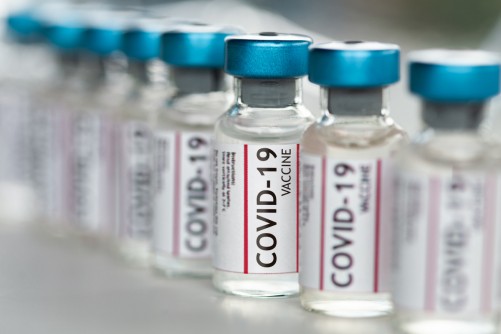Researchers in this randomized clinical trial examined whether an individual email nudge prompted more health care workers to register for a COVID-19 vaccination.
As Santos, et al. (2021) report, "The first opportunities to field test interventions to increase COVID-19 vaccination were among healthcare workers (HCWs), who were among the first to be offered COVID-19 vaccines. After one large Pennsylvania health system sent 36 vaccine-related mass emails to employees over five weeks, 9723 of 23 700 HCWs (41%) had still not scheduled their vaccination. We sought to determine whether individually addressed emails designed with behaviorally informed features could increase vaccination registration compared with a delayed control group."
In this randomized trial, the researchers assigned 9,723 employees who had not scheduled a COVID-19 vaccination to a delayed control condition (3241 [33%] randomized; 3179 [33%] received intervention) or to receive one of two individually addressed emails with three components. Both emails explained that Pennsylvania would soon expand vaccine eligibility beyond HCWs, reducing employees’ access to appointments, and encouraged them to schedule an appointment. The 6,482 employees in these intervention groups were assigned to receive an email that framed the decision to be vaccinated either by noting that many U.S. residents and fellow employees had chosen to be vaccinated, ie, social norms (3241 [33%] assigned; 3198 [33%] received intervention) or by favorably juxtaposing the vaccine’s risks with those of COVID-19, ie, reframing risks (3241 [33%] assigned; 3,190 [33%] received intervention). Both emails asked employees to make an active choice to receive a vaccine (hyperlinked to a scheduling portal) or not (hyperlinked to a survey soliciting their primary reason for declining). Employees in the delayed condition were randomly assigned to receive one of these emails (social norms: 1589 [50%]; reframing risks: 1589 [50%]) three days later. The primary outcome was registration on the vaccination scheduling portal during the three days after the first emails were sent.
The overall employee population of 23,700 HCWs comprised 17 362 (73%) women and 21 168 (89%) White employees, with a mean age of 43 years. Of the 9,723 targeted employees, 9457 (97%) had valid email addresses. Both emails (ie, social norms and reframing risks) led to more registrations in the first three days than the delayed condition (delayed control group: percentage of participants registering: 3.17%; 95% CI, 2.62%-3.85%; social norms: percentage of participants registering, 6.47%; 95% CI, 5.67%-7.38%; OR, 2.11; 95% CI, 1.65-2.69; P < .001; reframing risks: percentage of participants registering, 6.90%; 95% CI, 6.07%-7.83%; OR, 2.26; 95% CI, 1.77-2.87; P < .001) (Figure 1). There was no significant difference in registrations between the two email conditions (OR, 1.07; 95% CI, 0.88-1.30; P = .50). Among the 1,229 HCWs who declined to register and then completed the survey, the most common reasons were unknown vaccine risks (430 [35%]) and pregnancy-related concerns (165 [13%]).
Reference: Santos HC, et al. Effect of Targeted Behavioral Science Messages on COVID-19 Vaccination Registration Among Employees of a Large Health System: A Randomized Trial. JAMA Netw Open. 2021;4(7):e2118702. doi:10.1001/jamanetworkopen.2021.18702
